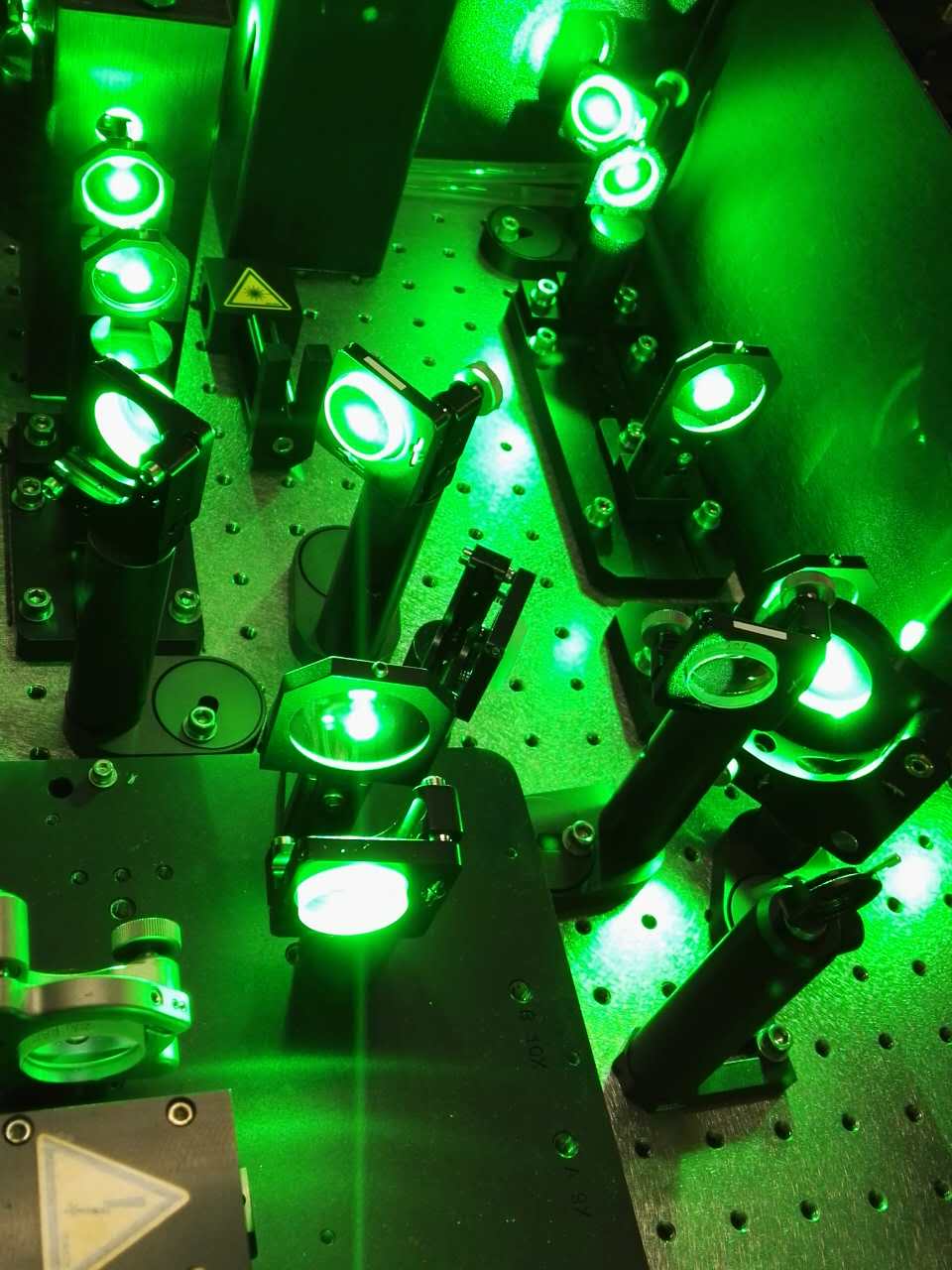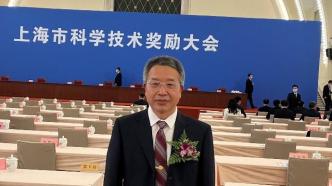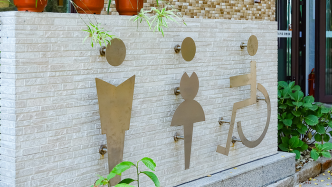
[Editor's Note] With funding from the Shanghai Science and Technology Commission (project number: 22DZ2304300), The Paper and World Science have teamed up to popularize science reports on the achievements that have won national and Shanghai science and technology awards.
This report revolves around the second prize project of the 2022 Shanghai Technological Invention Award, "Research and Application of Key Technologies for the Construction of Resource-Circulating Ecological Toilets and Their Low-Carbon Self-sustaining Operation", which was won by a team led by Professor Liu Hongbo of Shanghai University of Technology.
Metabolism is a fundamental characteristic of all living things, where nutrients are taken in and waste is excreted. Going to the toilet is a daily necessity in human society. Archaeological evidence from the Indus Valley Civilization shows that flush toilets have been in existence since around 3000 BC.
Today, various cutting-edge technologies have been applied to toilets, and many environmentally friendly toilets have emerged. However, in some remote rural areas of China and underdeveloped areas such as Africa, the sanitary conditions are still not particularly ideal. Relevant statistics show that excrement can contaminate food and water sources, cause intestinal diseases, and cause 1.5 million deaths of children under the age of five each year, which is higher than the combined death toll caused by AIDS and malaria. The United Nations Millennium Development Goals 2012 report pointed out: "Nearly half of the population (2.5 billion) in developing regions still do not have access to improved sanitation facilities."
In the 1980s, China promoted the "three-in-one" patriotic health campaign of water improvement, toilet improvement, and health education. Taking the opportunity of preparing for the Asian Games, China kicked off the "toilet revolution". In the 1990s, China included rural toilet improvement work in the "Outline of China's Children's Development Plan" and the Central Committee's "Decision on Health Reform and Development", setting off a vigorous "toilet revolution" in rural areas. In the country's "14th Five-Year Plan", it was once again emphasized that the rural toilet revolution is an important means of rural revitalization.
The Water Pollution Control and Resource Utilization Innovation Team of the School of Environment and Architecture of the University of Shanghai for Science and Technology has pioneered the creation of a technical system for the efficient treatment and resource utilization of environmental pollutants driven by microbial electrochemistry in China in response to the difficulties in collecting and transporting feces and sewage, disorderly discharge of pollutants exceeding the standard, and low level of resource utilization in the "toilet revolution". It has also applied it to the construction of resource-circulating ecological toilets, cascade resource utilization of livestock and poultry feces and sewage, and deep sewage treatment, promoting the implementation of hundreds of environmental protection projects around the world, generating a large amount of economic benefits, and contributing to the environmental protection cause of China and the world. The project "Key Technologies for the Construction of Resource-Circulating Ecological Toilets and Their Low-Carbon Self-sustaining Operation" won the second prize of the 2022 Shanghai Technology Invention Award.
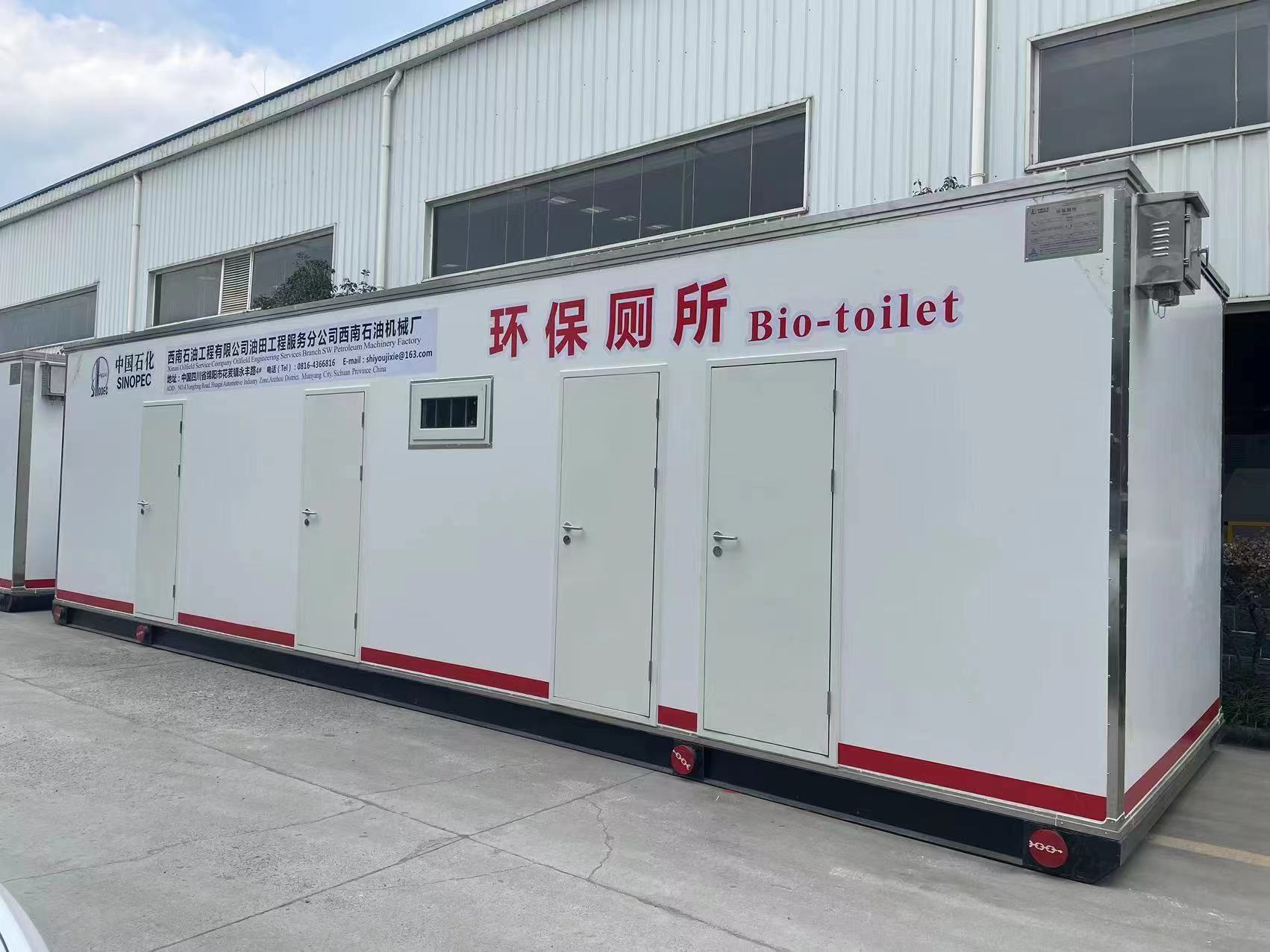
Environmentally friendly toilet.
Originated from the "Bill Gates" Foundation's "Reinventing the Toilet" charity event
In 2012, the project leader, Professor Liu Hongbo, joined the School of Environment and Architecture of the University of Shanghai for Science and Technology. After obtaining his doctorate from the School of Environmental Science and Engineering of Tongji University, he went to the University of Mainz in Germany for postdoctoral work, where he was exposed to a large number of cutting-edge environmental protection technologies.
In 2014, the Bill Gates Foundation launched the "Reinvent the Toilet" public welfare campaign around the world, soliciting research proposals from scientific researchers around the world. Participants must make the toilet function normally without water, electricity, or septic tanks. The cost of use per person cannot exceed 5 cents, and the completed ecological toilets must be able to be used for daily life in underdeveloped areas such as Africa.
Seeing the call for submissions, Liu Hongbo recalled the microbial electrochemical environmental protection technology he had learned in Germany. "This technology regards the entire sewage treatment plant as a potential 'battery'. Water is similar to the 'electrolyte' in the 'battery'. Microorganisms can continuously generate electricity. Some scientists once believed that if the 'electricity' of all sewage treatment plants is collected, it may become a sewage 'nuclear power plant'."
The idea is good, but there are engineering difficulties in achieving the results. "In fact, the resistance of water is very large, and it is difficult to collect enough electricity. It only stays at the idealized theoretical level." A small amount of blood donation from the human body will promote metabolism. Is there a way to make the activities of microorganisms more active? Liu Hongbo thought of the "electrical stimulation" mode. He returned the weak electricity generated by microorganisms to the sewage. Such a simple operation actually produced magical effects. The efficiency of microorganisms in degrading feces was greatly enhanced, and more electricity was generated. As long as there is a steady stream of feces entering the toilet, the treatment device can become a "perpetual motion machine" with continuous production. After the project was submitted, it was immediately recognized by the Bill Gates Foundation. The team of Shanghai University of Technology became one of the four winning teams in the Chinese division of the "Reinventing the Toilet" charity event, and jointly received US$5 million in funding.
The "perpetual motion machine" mode is turned on, and the "environmentally friendly toilet" uses "feces and urine" as "energy"
The industrialization of environmentally friendly toilets also kicked off. In order to successfully implement the results, Liu Hongbo and his team members developed a large number of application technologies.
The first step is to separate "feces and urine". It is not convenient to efficiently process the two when mixed together. The team developed source separation, water-saving and negative pressure collection technology, and created mixed-discharge negative pressure toilets and squat toilets, which can achieve separate treatment of feces and urine.
The liquid in feces is called "black water", while urine is called "yellow water". The substances contained in feces and urine are different. In addition, when collecting feces and urine, negative pressure collection technology and new liquid level gas control valves can achieve efficient collection of feces without consuming electricity. The negative pressure drainage driving force can reach 40 to 50 times the static pressure drainage power of conventional toilets, and the water volume of a single flush is reduced from 6 liters to 2 liters. The separation collection system also fully considers the isolation and elimination of odors during operation.
Secondly, we changed the traditional thinking and invented a full-spectrum toilet pollutant resource recovery reactor and supporting equipment based on microbial weak-electric regulation. It can be "self-sustaining" and simultaneously complete microbial power generation and "feces and urine" resource recovery. It can also deeply purify the sewage in feces into recycled water for flushing toilets.
"We can use microbial electrochemical coupling technology to recycle nitrogen, phosphorus and potassium substances in 'feces and urine', and obtain high-value fertilizers such as artificial struvite and magnesite. Struvite, commonly known as magnesium ammonium phosphate, has extremely low solubility in water and can be used as a raw material for the production of phosphate fertilizer or a slow-release fertilizer for crop growth. The chemical composition of magnesite is magnesium carbonate. In addition to refining metallic magnesium, magnesite can also be used as a refractory material and for the preparation of magnesium compounds. In the past, the extraction of potassium salts from feces was a difficult point and there were technical challenges. We have also solved it by using electrochemical methods to convert it into magnesium potassium phosphate fertilizer. We have calculated that when the current density is 3.5 milliamperes per cubic centimeter, the system's recovery rate for phosphorus in 'feces and urine' can reach 88.5%, and the recovery rate for potassium can reach 35.4%." Liu Hongbo introduced. Because of the use of special bacterial agents and microbial weak electrical stimulation methods, to a certain extent, the entire system is a "perpetual motion machine" that can continuously accept and process "feces and urine". As long as "feces and urine" come in, the system can continue to operate on its own. "Feces and urine" can be regarded as the "energy" of the system. Going to the toilet means letting the system start "automatic operation". The average electricity consumption per person in an "environmentally friendly toilet" is less than 0.05 degrees per day.
What is amazing is that the system can run "automatically" for 12 months, and only needs to be cleaned out once every two years. Ordinary environmentally friendly toilets need to be cleaned out after one year of operation, and the cleaning cycle is more than doubled.
Finally, the sludge after resource utilization is fully utilized and made to generate economic benefits. "We can prioritize the on-site resource utilization of residues and sludge. For example, we can reasonably mix nitrogen-rich sludge with crop straw and produce organic fertilizer through intelligent fermentation equipment. We can also transport it to the sludge resource utilization center for centralized stabilization treatment and resource utilization according to the scale."
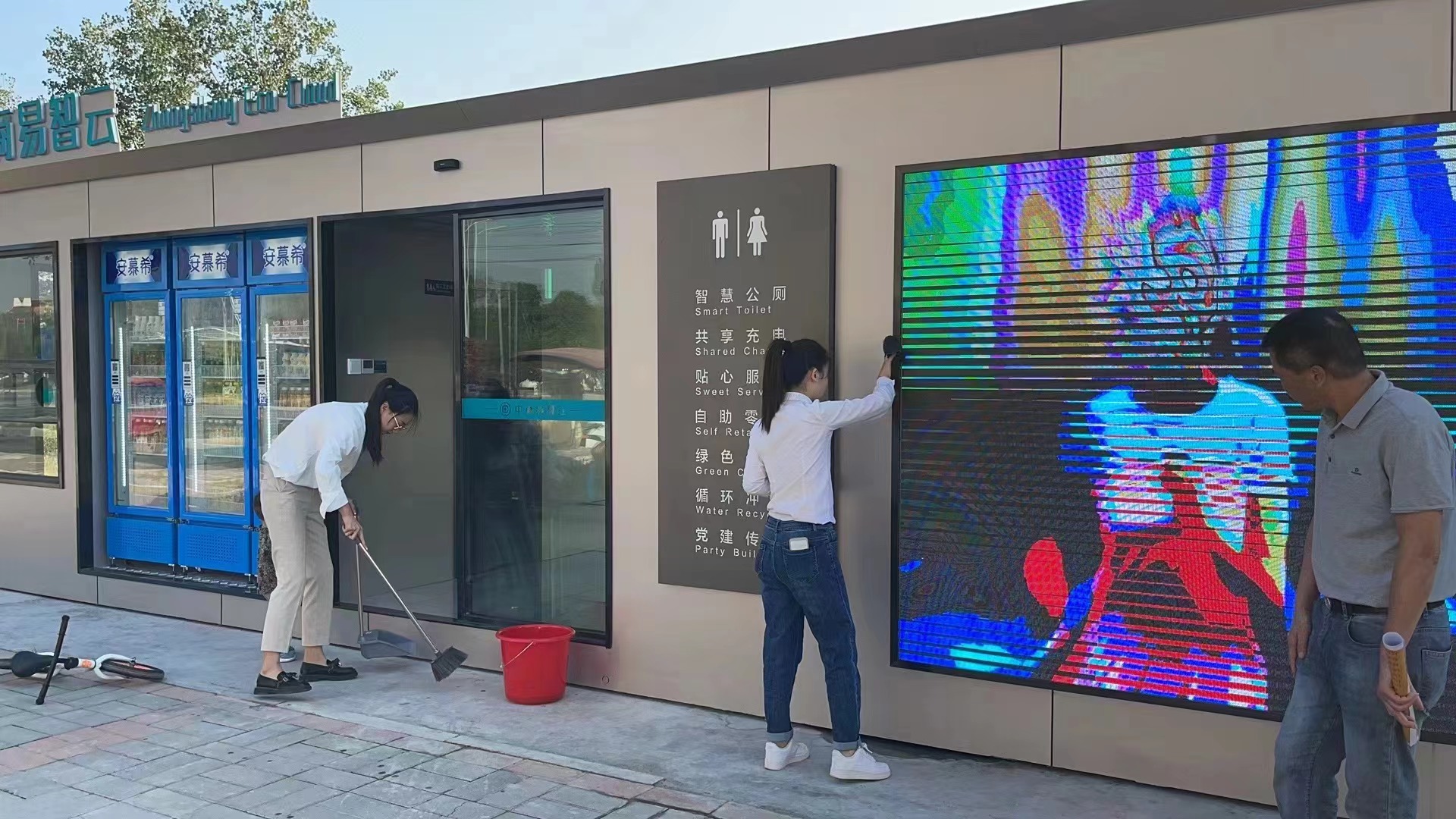
Environmentally friendly toilet.
Widely praised, the "environmentally friendly toilet" has become famous both at home and abroad
On a domestic rocket offshore launch platform, the "environmentally friendly toilet" achievement of Shanghai University of Technology has become a reality. In the white toilet, two-thirds of the space is the toilet area, and one-third of the space is equipped with a "self-operating treatment device" that does not require external power supply. The entire toilet is very clean and hygienic, and can accommodate more than a thousand people every day.
More than 100 such "environmentally friendly toilets" have been built in China and have been used in Beijing, Shanghai, Jiangsu, Zhejiang, Henan, Inner Mongolia, Qinghai, etc. They have been used in makeshift hospitals, oil companies, logistics companies, etc. The "environmentally friendly toilets" have also been used in Chinese aid projects in Africa by some central enterprises, and have been widely praised.
"We have calculated that the 'environmentally friendly toilets' that have been put into use serve more than 10 million people each year, reduce organic pollutants by about 5,000 tons, recycle more than 1,000 tons of nitrogen fertilizers, and save more than 2 million tons of water for flushing toilets. The added output value in the past three years has exceeded 200 million yuan," said Liu Hongbo.
The project has 17 authorized patents, including 10 invention patents, and has published 28 papers (including 23 SCI papers). Team members have edited or participated in the formulation of national and industry reports/standards/professional guidance books such as "Urban Public Toilet System Hygiene and Safety Development Report", "Rural Toilet Revolution Practice and Guidance", and "Rural Public Toilet Operation and Maintenance Technical Specifications".
On this basis, Liu Hongbo led the team to complete the "Key Technology and Equipment for Microbial Weak Current Driven Cascade Resource Utilization of Livestock and Poultry Manure" and "Theory and Technology for Microbial Electrochemical Assisted Deep Denitrification of Low C/N Wastewater". The former applies microbial weak current technology to the resource management of livestock and poultry manure, and the latter uses this technology for deep wastewater treatment. Microbial weak current environmental protection technology has also become a new environmental protection technology that has attracted much attention at home and abroad.
Associate Professor Xu Suyun, a member of the team, said that they are currently working hard to conduct more detailed and in-depth research on the mechanism of microbial weak current technology.
"We hope to continue to explore the weak current release mechanism behind microbial resource processing and better regulate it. We hope it can release more electricity and carry out systematic technical upgrades to environmentally friendly toilets in the future to meet the needs of more users." Liu Hongbo said.
